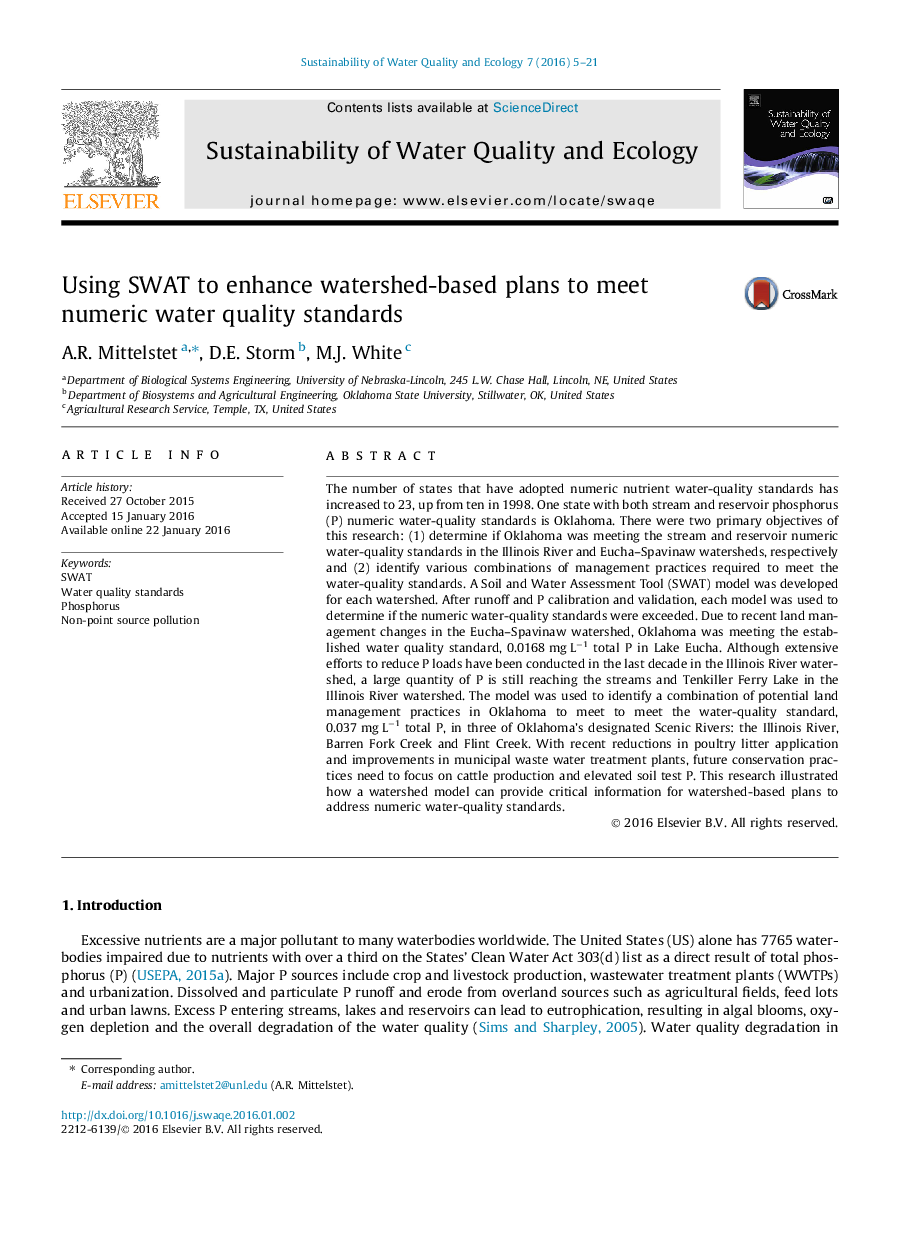| کد مقاله | کد نشریه | سال انتشار | مقاله انگلیسی | نسخه تمام متن |
|---|---|---|---|---|
| 1064619 | 1485801 | 2016 | 17 صفحه PDF | دانلود رایگان |
• SWAT a capable tool in the evaluation of numeric water-quality standards.
• New in-stream routine adequately calibrated phosphorus.
• SWAT used to evaluate a reservoir’s numeric water-quality standard.
• Management practices must consider legacy phosphorus.
The number of states that have adopted numeric nutrient water-quality standards has increased to 23, up from ten in 1998. One state with both stream and reservoir phosphorus (P) numeric water-quality standards is Oklahoma. There were two primary objectives of this research: (1) determine if Oklahoma was meeting the stream and reservoir numeric water-quality standards in the Illinois River and Eucha–Spavinaw watersheds, respectively and (2) identify various combinations of management practices required to meet the water-quality standards. A Soil and Water Assessment Tool (SWAT) model was developed for each watershed. After runoff and P calibration and validation, each model was used to determine if the numeric water-quality standards were exceeded. Due to recent land management changes in the Eucha–Spavinaw watershed, Oklahoma was meeting the established water quality standard, 0.0168 mg L−1 total P in Lake Eucha. Although extensive efforts to reduce P loads have been conducted in the last decade in the Illinois River watershed, a large quantity of P is still reaching the streams and Tenkiller Ferry Lake in the Illinois River watershed. The model was used to identify a combination of potential land management practices in Oklahoma to meet to meet the water-quality standard, 0.037 mg L−1 total P, in three of Oklahoma’s designated Scenic Rivers: the Illinois River, Barren Fork Creek and Flint Creek. With recent reductions in poultry litter application and improvements in municipal waste water treatment plants, future conservation practices need to focus on cattle production and elevated soil test P. This research illustrated how a watershed model can provide critical information for watershed-based plans to address numeric water-quality standards.
Journal: Sustainability of Water Quality and Ecology - Volume 7, May 2016, Pages 5–21
